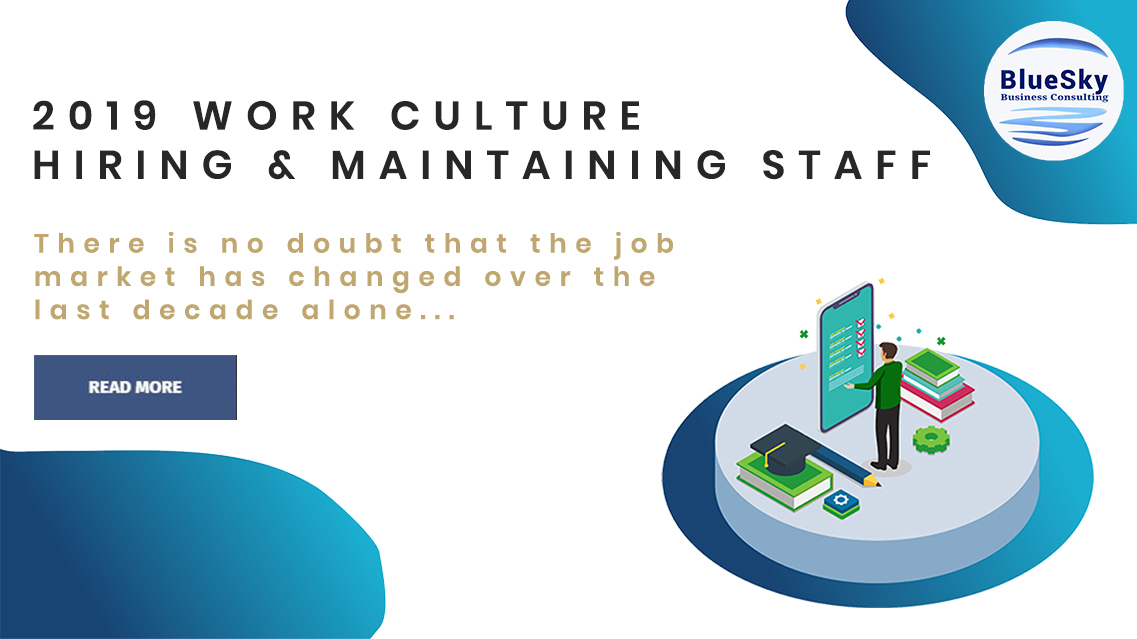
2019 Work Culture: Hiring & Maintaining Staff
There is no doubt that the job market has changed over the course of the last decade alone. In 2008 times had changed in the industrial and trades industry in Western North America when the price of steel sky-rocketed forcing industries to regrettably shorten their teams.
Since that time the effects from industrial impacts had trickled down across North America. It makes sense, right? The amount of tradespeople earning a healthy wage had diminished and so had the spend by locals on the forefront of their communities, which later made an impactful mark on local businesses.
Since 2008 North America has been trying to gain traction to implement better employment opportunities for candidates. Time may have been hard throughout the years, though for many it’s not only about making a good, well-rounded livable wage, but more so about company inclusion, job environment and fulfillment.

If you hadn’t guessed it yet, this article is going to heavily revolve around current industry and hiring trends in North America. At some point in time (or on a regular basis), we’ve all wondered (or even asked) how others are finding ‘the job racket.’
It’s nothing out of the normal for people to talk about job prospects. We’ve compiled a small list of things people talk about here:
“Ahhh, you’re on the job hunt again! What happened to the last job? Not getting enough hours?” – Nearly 1 million Canadians work part-time when they would rather work full-time hours.
“It’s so hard to find a job these days. It’s almost like no one is hiring. How am I supposed to get a job when everyone is holding onto their jobs these days?” – Fact: Did you know that the greatest percentage of individuals between the age of 25 and 54, men and women in their prime years are involuntarily working jobs or in excess of their other job?
“Why are businesses not hiring full time anymore? It’s like I have to work a dozen minimum wage jobs to make ends meet”
“How am I supposed to get a job when I can’t get experience after my post-secondary education?” – It’s no lie that businesses are looking for distinct diversity in the workplace these days, meaning they are looking for individuals with interesting stories and work skills. These days you have to be a jack-of-all-trades so-to-speak, but that’s not always the case. In more ways than one these days, individuals must be on the lookout for volunteer positions anywhere they can find them and apply those opportunities and lessons to their resume.
“The number of people holding off on retirement is increasing.”
Once again, this comes as no surprise. We now live in a society that has better health than before, but of course we speak in terms of morality. People are living longer lives than before due to healthcare and are able better to apply their selves to job environments. For some it’s about feeling fulfillment throughout their day, but for others it’s about ensuring that their family and dependents at home can be taken care of into the future.

We’ve all heard the instances listed above before, but what are the actual statistics like for both jobs, hiring and retaining employees? What if we told you that the greater percentage of employees would take a 10% pay reduction for a better, more inclusive work environment or that the healthiest workplaces have a diverse work culture? Read the following to find out!
1. Currently 67% of recruiters cannot find the proper number of high-quality candidates during the hiring process. (Jobvite)
2. Employers find it increasingly difficult to get individuals into positions in the workplace where the global talent shortage is at a 12-year high. (ManpowerGroup)
3. 45% of employers say they cannot find the skills required for the job, all-the-while 40% say they cannot find workers with the skills they ‘need’ for the job. These statistics are at an all-time high since 2008. (ManpowerGroup)
4. The average percentage of individuals applying for jobs has decreased from 59 in 2015, to 52 in 2016 and to 36 in 2017. (Jobvite)
5. Did you know that the average job in any given North American city brings in over 250 applicants? That’s a lot of sifting and interviewing! (ERE)
6. To date, more and more employers are seeking more and more diverse employees for their work environment. A more diverse work environment leads to happier staff. 78% of talent leaders wish to hire employees with diverse skills. (LinkedIn)
7. Companies and operations that are racially diverse are 35% more likely to perform their everyday tasks and goals as opposed to companies and operations who are not. (McKinsey)
8. Currently, the top areas employers look at are experience, conversation skills, knowledge of the industry, and culture fit. (Jobvite)

What about the actual job interview process? We’ve outlined some quick specifics for you here:
1. Did you know that 95% of potential employees consider the way the potential employer treats them during the job interview will reflect how their employer will treat them on the job? (iCIMS Inc.)
2. 60% of applicants will outright abandon their online job application to complexities or due to the fact that the application process is too long i.e. ‘TLDR’ (too long, didn’t read) (iCIMS Inc.)

3. 76% of individuals state that not hearing back from their potential employer regarding whether or not they were considered for the job or not is actually more stressful than not hearing back from someone after the first date. (iCIMS Inc.)
4. We live in the age of communication. If your business is not online in multiple areas you’re not going to be found. Every business must maintain their online candidates through the resources they’ve administered i.e. Career Beacon, LinkedIn, etc. Having said this, an overwhelming (though not surprising) 69% of candidates use Google to find and apply for jobs. (iCIMS Inc.)
5. The number of potential employees ignoring the job has staggered over the last ten years to become the highest rate of ‘dropout’ over time where 20-50% of applicants do not show up to their scheduled interviews, or choose not to show up on their first day on the job. (USA Today)
6. Roughly 75% of employers believe they cannot fill positions in their company due to lack of applicants suited in the specified career field. In saying that, roughly 75% of employers feel candidates lack specific ‘soft’ and ‘hard skills’ for the role. Volunteering background, communication skills and aptitude play a large role here. (ManpowerGroup)
7. As mentioned earlier, it is becoming increasingly difficult for larger companies to fill the roles needed for success. Large companies with 250 employees or greater find it TWICE as difficult to fill their needed roles than small companies with that of 10 employees or less. In essence of this, smaller companies are at an all-time high for having at least one unfilled position which stays open for an extended period of time. (NFIB)
8. Roughly 1 out of 8 individuals applying for a position will get a call back regarding an interview from the employer. In comparison to this, employers on average offer a position to every third or fourth candidate they interview. 90% of those offers are accepted by the future employee.
Let’s magnify our approach towards the tech sector now:
1. According to LinkedIn, the hardest employment areas to fulfill and sustain are Platform Engineers, Cloud Architects, Business Analysts, Data Analysts, Statisticians, IT Managers, Systems Integration Engineers, Web Developers, Full Stack Web Developers, UX designers, and UI designers. (LinkedIn)
2. Given the information above, tech workers feel the best sense of ‘belonging’ in their respective field as they feel they work for a very precious purpose, which they do! Tech workers are also the second largest employed group who consider their jobs to be safe and sustainable, hence always being required for a valued service (DecisionWise via Human Resources Today)

What about during work or after the fact?
1. Roughly 64% of North Americans feel their job gives them a sense of purpose and belonging. (DecisionWise via Human Resources Today)
2. More than 50% of currently employed individuals in North America are always on the lookout for a new job opening either within or outside of their company. Companies with the best retention records have a diverse workplace with community build incentives. Remember, most employees are said to leave because they’re looking for a better company culture. (Gallup)
3. Roughly one-third of employees are recorded to have left their job in the first 90 days (usually the 3-month probationary period) because the job they’ve applied for is not what they expected it to be.(Jobvite)




